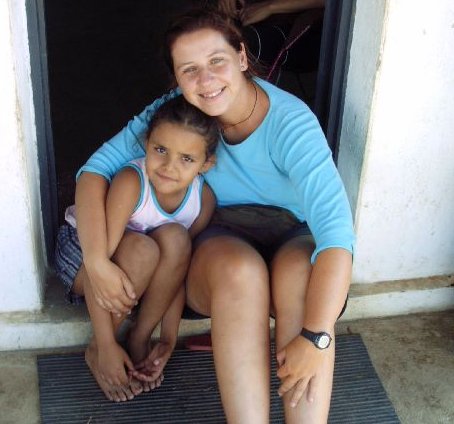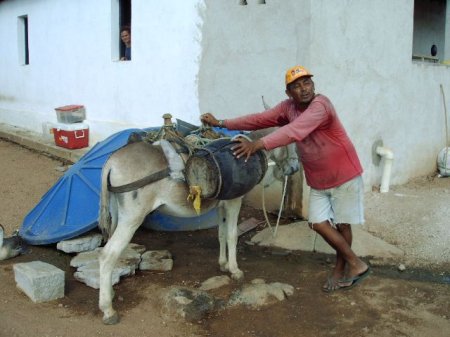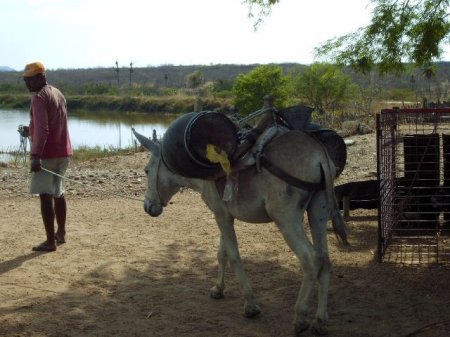Dry

Eutrofic lakes are hard to find around here and that is why –after an email discussion with the complete Salga team some time ago – we decided to include reservoirs in our data set. Most of these can be found in the semi-arid area about 200 to 400 km away from Natal. On Sunday morning we left with a new team in the direction of Assu. The landscape we were driving trough was not really promising for us ‘lake-hunters’: sand, rocks, cactuses, dry bushes, some skinny goats and half eaten half dried up cow carcasses. It looked like we were entering the wild west –For the Brazilian readers: they could have perfectly filmed Bangi Bangi in this ‘decor’-.
When we finally found the first reservoir it was quite different from the lakes we had seen so far. It was eutrofic all right and we expected to see changes in the water plants, but we were not quite prepared to find palm tries growing in the middle of the ‘lake’. The friendly owner who was just on his way to vote [All Brazilian adults that can read and write had to vote in favor or against forbidding the possession of fire arms by civilians. The ‘against’ group won. It was very interesting to see the discussions about all the pro’s and contra’s, but I’ll stick to our story now.] told us that the reservoir was constructed in 1958 and dried up completely in 1993. So again we were dealing with a temporal lake. Because we did not have any alternatives we decided to go for it anyway.
Later - when we were making an inventory of the water plants - we found out that the palm trees were not only funny but came at hand as well as they provided shade. The area were we are working now is extreeeemely warm. Before we get into the boat we have to wet it because otherwise you get burned the instant you sit down on the metal seats. Everything you touch is painfully hot. We wet our hats to get some refreshment but in 5 minutes they are completely dry again. Furthermore there is almost no wind except for some blasts of wind that feel like 1000 hair dryers have been turned on simultaneously. At one point Rosemberg and I were even hit by a twister. We were just collecting sediment when it approached us. We had to hold on to all our sample cups to prevent them from flying away. We got hit by tree leaves and salvinia plants that were swept up from a near by pond.
We thought about printing a T-shirt saying ‘we survived mini-Wilma’.

Eduarda and GIge

Filling up the donkey

Water is scarce and transported by donkey
Previous | Overview | Next



